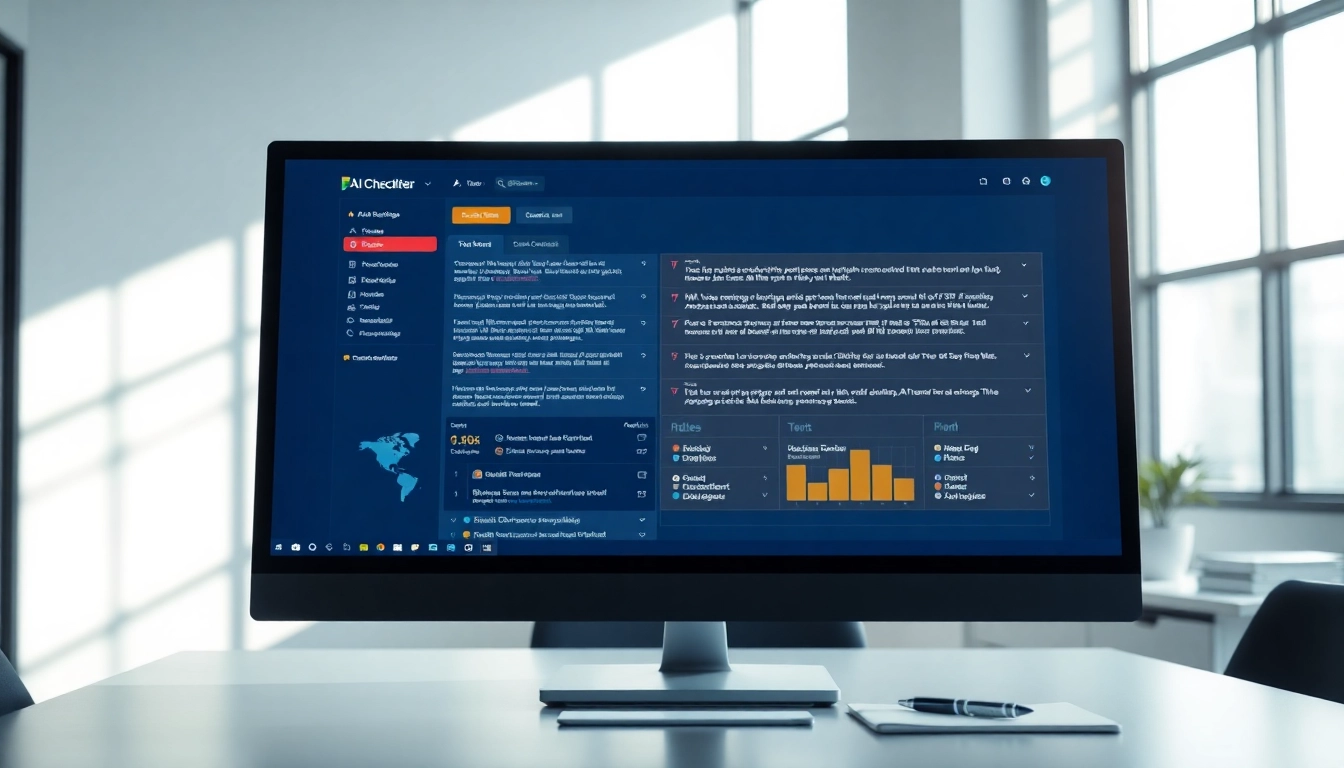Introduction to Web Development
Web development has grown into a fundamental component of the digital age, playing a pivotal role in how we interact with information, services, and communities online. From simple static websites to complex web applications, the evolution of web development encompasses a wide range of practices and standards aimed at building and maintaining functional spaces on the internet.
What is Web Development?
Web development refers to the processes involved in creating a website or web application for the Internet or a private network. It encompasses various tasks like web design, web content development, client-side/server-side scripting, and network security configuration. Depending on the scope, web development can range from developing a simple static page to complex dynamic sites and web applications.
Importance of Web Development in Today’s Digital Landscape
Web development is vital for businesses, organizations, and individuals in today’s technology-driven economy. A strong online presence enhances visibility and credibility and serves as a platform for communication, information dissemination, and commerce. Websites have become essential tools for marketing and engagement, allowing brands to interact with their audience effectively. Furthermore, effective web development ensures that these interactions are efficient, user-friendly, and secure, fostering positive user experiences vital for retention and conversion.
Common Misconceptions about Web Development
Despite its ubiquity, several misconceptions surround web development:
- Web Development is Only for Programmers: While programming is a significant aspect, web development also involves design awareness and an understanding of user experience.
- Once a Website is Built, It Doesn’t Need Updates: Websites require regular updates for security, content freshness, and relevance.
- All Web Developers Know Every Coding Language: Developers often specialize in specific areas such as front-end, back-end, or full-stack.
Essential Technologies for Web Development
Understanding HTML, CSS, and JavaScript
The foundational technologies of web development are HTML, CSS, and JavaScript. HTML (Hypertext Markup Language) structures the content on the web, defining elements such as headings, paragraphs, links, and images. CSS (Cascading Style Sheets) is responsible for styling that content, including layout, colors, and typography. JavaScript adds interactivity and dynamic behavior to websites, enabling things like form validation, animations, and real-time updates.
Frameworks and Libraries in Web Development
Frameworks and libraries streamline the web development process, enabling developers to build applications more efficiently:
- Front-end Frameworks: frameworks like React, Angular, and Vue.js simplify the development of interactive user interfaces.
- Back-end Frameworks: frameworks like Node.js, Django, and Ruby on Rails address server-side development, making it easier to manage databases and server logic.
- CSS Frameworks: frameworks such as Bootstrap and Tailwind CSS provide pre-designed UI components that enhance design consistency and speed up development.
Tools and Technologies for Developers
Along with programming languages and frameworks, developers utilize a variety of tools that improve productivity and code quality:
- Code Editors: Software like Visual Studio Code or Sublime Text provide developers with integrated development environments (IDEs) that enhance code writing experiences through features such as syntax highlighting and version control integration.
- Version Control Systems: Tools like Git facilitate collaboration among developers by tracking changes in code and allowing multiple contributors to work on the same project seamlessly.
- Task Runners and Build Tools: Tools like Gulp and Webpack automate repetitive tasks such as minification, optimization, and file organization.
The Web Development Process
Planning and Designing Your Website
The foundation of effective web development rests on meticulous planning and design. Developers and stakeholders must define the purpose of the website, its target audience, and the necessary features. This phase often includes user research, wireframing, and prototyping, which facilitate collaboration among designers, developers, and clients. Design choices must focus on achieving a balance of aesthetic appeal and functionality, resulting in a user-friendly layout.
Development: From Code to Live
Following the planning phase, developers begin coding the website. This phase involves setting up domain names, hosting, and implementing both front-end and back-end components. Effective development practices may include:
- Agile Development: Implementing methodologies that allow rapid iterations and adjustments based on user feedback.
- Code Reviews: Conducting regular code checks to improve code quality, maintainability, and collaboration among team members.
- Cross-Platform Compatibility: Ensuring that web applications function smoothly across different browsers and devices.
Testing and Launching Your Website
Testing is critical in the web development process to ensure that a website functions as intended. This phase may include:
- Functional Testing: Verifying all components of the website work correctly.
- Usability Testing: Gathering feedback from real users to ensure that the website is intuitive and meets user needs.
- Performance Testing: Assessing website speed, load times, and responsiveness to optimize user experiences before launch.
Once testing is completed and any refined adjustments are made, the website is prepared for launch.
Best Practices for Effective Web Development
Responsive Design and Mobile Optimization
With the increasing use of mobile devices for web browsing, implementing a responsive design is essential. Responsive design ensures that websites adapt to various screen sizes, providing optimal user experiences regardless of device. Techniques to achieve responsiveness include using flexible grids, CSS media queries, and fluid images that automatically adjust in size depending on the device accessing the site.
SEO Strategies for Web Development
Incorporating SEO (Search Engine Optimization) strategies during the web development process enhances the visibility of the site in search engine results. Key SEO strategies include:
- Semantic HTML: Using appropriate tags ensures that search engines correctly interpret the content of the site.
- Optimizing Images: Using descriptive file names and alt attributes enhances accessibility and SEO performance.
- Improving Page Speed: Minimizing file sizes, leveraging browser caching, and optimizing server response times improve performance, positively impacting SEO.
Accessibility Standards in Web Development
Accessibility is a crucial aspect of web development, ensuring that all users, regardless of their abilities, can access and navigate websites effectively. Adhering to accessibility standards (such as the Web Content Accessibility Guidelines, WCAG) involves:
- Providing Text Alternatives: Including alt text for images and captions for videos aids users with visual impairments.
- Keyboard Navigation: Allowing navigation and interaction without the need for a mouse benefits users with mobility restrictions.
- Color Contrast: Ensuring sufficient contrast between text and background colors enhances readability for all users.
Future Trends in Web Development
Emerging Technologies Shaping Web Development
Web development continues to evolve as new technologies emerge. Innovations such as web assembly, which enables developers to use languages like C and Rust to run code in the browser, expand performance possibilities. Additionally, the rise of Headless CMSs (Content Management Systems) allows greater flexibility in how content is delivered across multiple platforms and devices, focusing on performance and user experience.
The Rise of Progressive Web Apps
Progressive Web Apps (PWAs) merge the best of web and mobile apps. They offer a native app-like experience directly through web browsers, promoting features like offline access, push notifications, and fast loading times. By leveraging service workers and leveraging APIs, PWAs ensure that users have seamless interactions with web applications, regardless of connectivity.
How AI is Influencing Web Development
Artificial Intelligence is making significant inroads in web development, facilitating various aspects of design, user experience, and optimization. AI-driven analytics tools help web developers understand user behaviors, automating insights for better decision-making in design and functionality. Chatbots and virtual assistants are being integrated into websites, providing real-time user interaction and support while enhancing user engagement.



